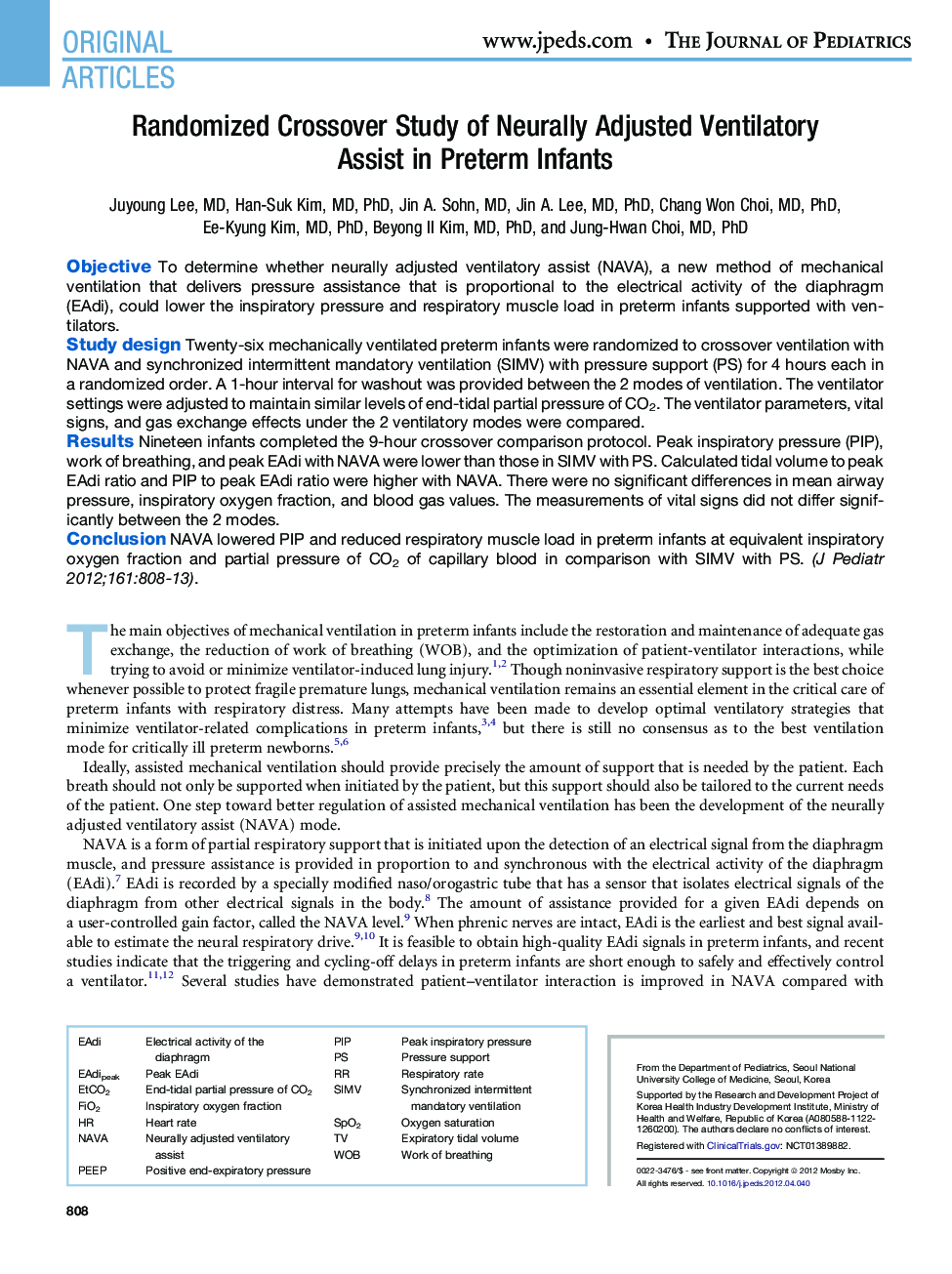| Article ID | Journal | Published Year | Pages | File Type |
|---|---|---|---|---|
| 6224713 | The Journal of Pediatrics | 2012 | 8 Pages |
ObjectiveTo determine whether neurally adjusted ventilatory assist (NAVA), a new method of mechanical ventilation that delivers pressure assistance that is proportional to the electrical activity of the diaphragm (EAdi), could lower the inspiratory pressure and respiratory muscle load in preterm infants supported with ventilators.Study designTwenty-six mechanically ventilated preterm infants were randomized to crossover ventilation with NAVA and synchronized intermittent mandatory ventilation (SIMV) with pressure support (PS) for 4 hours each in a randomized order. A 1-hour interval for washout was provided between the 2 modes of ventilation. The ventilator settings were adjusted to maintain similar levels of end-tidal partial pressure of CO2. The ventilator parameters, vital signs, and gas exchange effects under the 2 ventilatory modes were compared.ResultsNineteen infants completed the 9-hour crossover comparison protocol. Peak inspiratory pressure (PIP), work of breathing, and peak EAdi with NAVA were lower than those in SIMV with PS. Calculated tidal volume to peak EAdi ratio and PIP to peak EAdi ratio were higher with NAVA. There were no significant differences in mean airway pressure, inspiratory oxygen fraction, and blood gas values. The measurements of vital signs did not differ significantly between the 2 modes.ConclusionNAVA lowered PIP and reduced respiratory muscle load in preterm infants at equivalent inspiratory oxygen fraction and partial pressure of CO2 of capillary blood in comparison with SIMV with PS.
